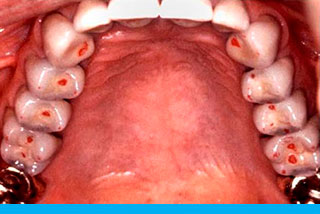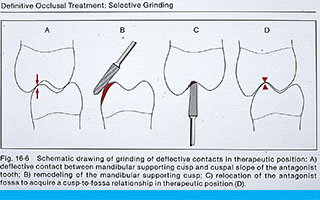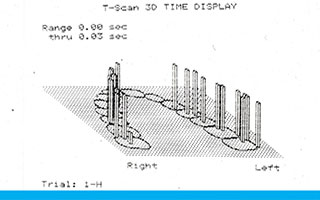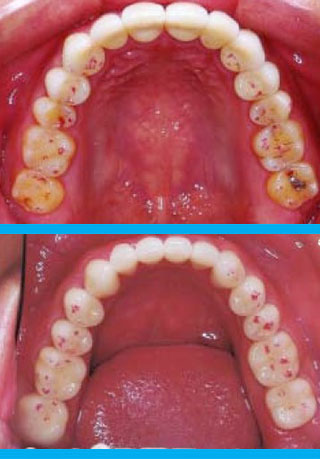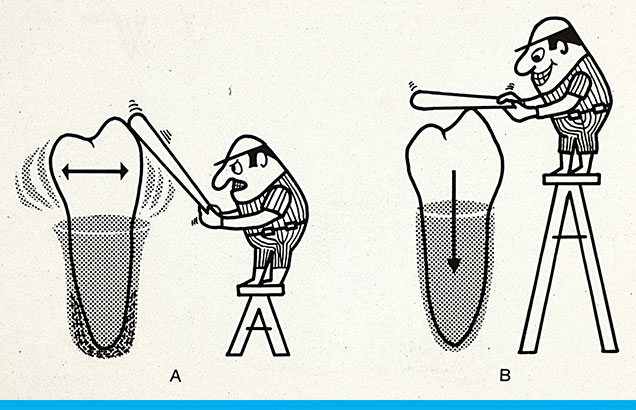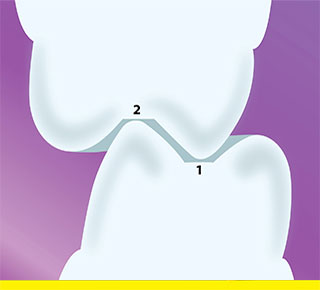Bite Adjustment (occlusal adjustment, spot grinding of hinge bite, occlusal equilibration)
Occlusal or bite adjustment (or occlusal equilibration) initially involves spot grinding mini flat areas (helicopter landing pads for points or cusps) on the back teeth to correspond to the cusp tip or points on the opposite teeth. Spot grinding at the back of the top front teeth is also performed, but in general, most is performed on back teeth.
To make the other teeth contact one has to spot grind mini flat areas (helicopter landing pads) to correspond to the points or cusps of the opposite teeth as shown in the clinical case below.
Bite Adjustment Process
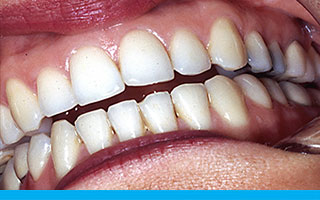
After occlusal splint therapy, the TMJ discs have almost relocated into the centre of the jaw joint and now the true hinge bite becomes evident, that is, only one tooth is touching – the problem tooth leading to the initial TMJ problem.
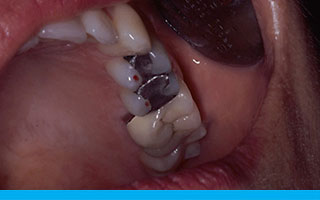
We will identify the tooth that hits first. In this case only two teeth are touching – where the red marks have registered.
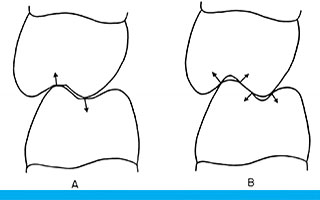
In diagram B the bite is destructive and acts like a wedge which will crack your teeth. Diagram A illustrates ‘flat helicopter landing pads’ in readiness the cusp tip or point to bite on in a protective manner.
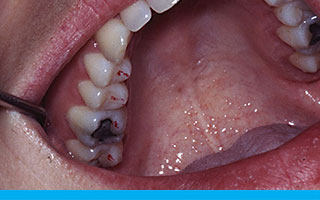
The red marks in this case illustrate destructive side to side contacts that require spot grinding or occlusal adjustment / bite adjustment / occlusal equilibration.
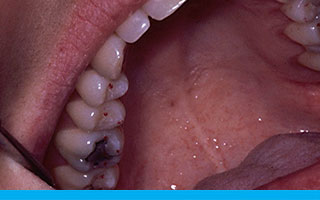
Note the red marks now located on the flat helicopter landing pads or points which is a protective hinge bite.
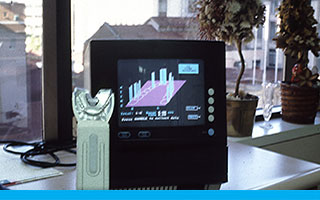
This is a T-SCAN computer occlusal analyser that uses a liquid crystal wafer to record hinge bite on a monitor with vertical bars denoting a balanced bite.
Diagram A shows if you bite on the side of the tooth, the whole tooth will shake and vibrate and become uncomfortable and ultimately painful such as developing a Cracked Tooth Pain Syndrome. Also, the patient will avoid biting this tooth and ‘set’ their lower jaw in a non-neutral position and this will strain the TMJ jaw joints.
Diagram B shows that after the bite is adjusted by spot grinding (Occlusal Adjustment / Equilibration) the biting force will be transferred to the point or cusp of the tooth. This force is called an axial force which is not damaging to the tooth, gum, bone or TMJs.
Achieving a stable hinge bite
This is nearly always performed after 4 splint adjustments during occlusal splint therapy when the hinge motion of the jaw joints is relatively stable, healthy and reproducible. The aim is to have the teeth mesh at exactly the same time as the lower jaw hinges. When this occurs, it is called the hinge bite. We need to achieve a stable hinge bite.
The diagram below illustrates flat landing pads that have been adjusted to accommodate the points of the opposite teeth. Read more here on full occlusal therapy.
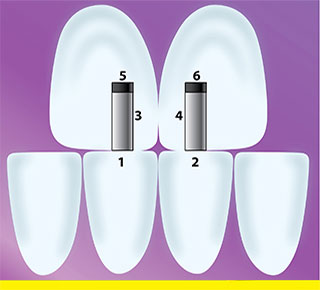
Internal view of top front teeth illustrating Railway Lines or Protrusive Ramps (3 & 4) to guide the lower jaw forward in a protective manner. For full explanation please Click Here
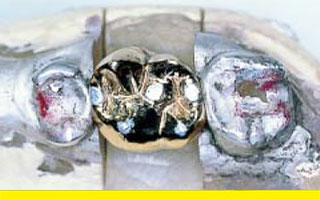
Gold crown shows 3 helicopter landing pads (Centric Platforms) and 2 points or cusps. For full explanation please Click Here
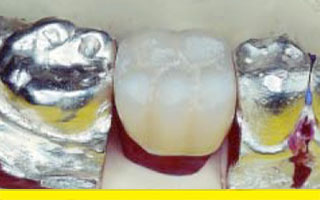
Porcelain crown shows 3 supporting Spheroidal points that are not sharp and not destructive but are rounded. For full explanation please Click Here
This then allows the teeth to bite vertically in the long axis of the teeth. This prevents sideways forces being generated inside the teeth and therefore preventing premature wear and/or fracture of the tooth, filling or crown. It also prevents the lower jaw from being pushed unnaturally onto the discs of the jaw joints and causing a displaced clicking disc.
When 4 protective bites occur, an environment in the mouth is created which keeps the TMJ discs in a stable position during eating and talking and sleeping. The TMJ discs are thus protected and the disc displacement is less likely to occur. Hence, no clicking, pain or restricted mouth opening.
There are 4 lower jaw movements and hence 4 bite types.
- Hinge Bite – The back bite is the main bite or home biting position during molar eating, clenching and swallowing. To be protective it must be balanced left and right sides and the points (cusp) must bite at right angles to helicopter landing pads or centric platforms. A true hinge bite also occurs when the TMJ discs are centred in the cup of the TMJ joint.
- Left Bite – Left and Right bites are guided by the corner (3rd tooth from the middle) canine teeth. This movement is only protective if it is a vertical/lateral sideways motion not a cow like horizontal sideways movement. Cow like jaw movement stretches the face & TMJ and prematurely wears teeth away.
- Right Bite – As above
- Forward Bite – Forward bite is guided by the two top front teeth and two bottom front central incisor teeth together like 2 railway lines. This protective bite spreads the biting force between both TMJ jaw joints.

